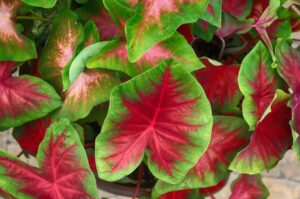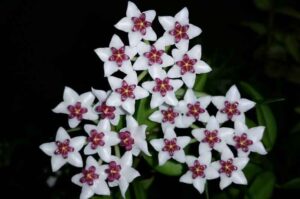Do Begonias Come Back Every Year? (Answered)
While Begonias are extremely versatile, gorgeous, and used in various ways by owners, one major concern remains, do Begonias come back every year? Here is the answer.
No, the Begonias don’t come back every year. Because they are annual plants, they won’t grow back each year on their own, rather they have to be replanted again to grow in the next season.
When potted in the spring, which is during March-April, you can expect a basket or a bed full of flowers by July. These flowers last till the first frost of autumn.
So, you can expect four months of bloom from one Begonia plant every year. Being annual plants, these beautiful flowers will give you a year of bloom, and the next year you will have to replant your Begonia again.
If looked after properly, and taken care of in the right way, Begonias can give you years of enjoyment in gardening.

Are Begonias Annual Or Perennial?
No Begonia is perennial. They are all annual flowers that bloom throughout the year. If you plant your Begonias indoors, you are sure to get flowers year-round.
However, garden or outdoor Begonias do not have a lifespan as long as indoor Begonias per season as they are unable to tolerate frost. So, if your Begonias are planted outside, the blooms are most likely to perish after the first or second autumn frost.
Annual Begonia Caring Tips
Annual Begonia plants are very useful in summer gardens and otherwise. Annual Begonia care is simpler than you can expect, the only thing being, one learns how to properly take care of Begonias.
Depending upon the location and region in which the plant is grown, watering is one of the most essential things to do correctly, and beginners often mess up this part.
How Are Begonia Plants Grown In The Annual Garden?
Also known as wax Begonias or bedding Begonias, Begonia, annual growing plants grow quickly, and can be used as fillers in the garden. It has attractive flowers with thick foliage.
When planted in mass, they can be the focal point of the garden. At the same time, these plants are highly versatile. You can also plant them in individual hanging baskets instead of flower beds and make a beautiful décor out of them.
If you leave in an area where deer show up pretty often, you are safe to plant rows of begonia in your garden as these plants are deer resistant.
Begonias thrive in full sun to partly shaded locations. Full sun locations during hot summer days may be harsh on annual Begonia plants, as they become more vulnerable to diseases. So, if you live in a region where the heat is high and receives straight sunrays, plant the Begonias in a place where they will receive a subtle afternoon shade.
Annual Begonia Care
Once your Begonias are planted in flower beds or hanging baskets, your main job is to deadhead the spent blooms and make sure that the soil is constantly moist.
When it comes to annual Begonia care, watering is the most important part of the job. Like most other plants, the soil needs to be moist and not waterlogged. The best type of soil used for Begonias is well-draining soil or potting mix with cocopeat.
Water the plant at its base to avoid fungal infections like the leaf-spot disease. If you want to keep your Begonias at their best health, deadhead and pinch back the plants regularly. You can cut the annual Begonias before frost arrives and use them as a houseplant in winter.
When the plant is inside, you have to keep the soil moist, keep the plant in a place with bright filtered light and also, provide humidity with the help of a pebble tray or humidifier.
You can easily propagate the plant with cuttings to get additional plants. Plant the cuttings during spring and you will have your flowers bloomed by July.
Are All Begonias Tuberous?
No, all Begonias are not tuberous. There are Begonias with tuberous roots, rhizomes, and fibrous roots.
Tuberous root Begonias are a large group of complex hybrids that consists of many species and take years of breeding and development. These plants are significant due to their prominent multicolored, scented flowers, and range from1/2 inch in diameter to the size of a dinner plate.
However, the most successful way to identify a tuberous Begonia is to observe the roots which are fleshy tubers. These tubers store energy for the plant during winter when it is completely dormant.
Some Begonias with fleshy roots creep across the soil and are called rhizomes. These Begonias have highly-colored foliage and are covered in exotic patterns, present in multiple varieties. These blossoms are usually small and overshadowed by striking foliage.
If you observe the surface of the soil and find rhizomes, that confirms the identification of the plant. The leaves of rhizomatous Begonias are typically large, sometimes more than 6 inches.
Lastly, the Begonias that don’t have rhizomes or tubers, fall under the fibrous-rooted category. These Begonias have an ordinary root system. They include many variants of Begonias which are commonly used as summer bedding plants. The type of Begonias that has glossy leaves is all wax leaf Begonias.
Apart from that, a major subtype of fibrous root Begonias is angel wing Begonia or cane stem Begonias which are identified with long, erected canes that resemble bamboo. These canes can reach a height of about 12 feet. The size of an ordinary cane is only about 2 to 3 feet. These plants are good for solo growing or in a large grouping. Also, they grow marvelously in semi-shaded areas.
Will My Begonias Come Back Next Year?
Being annual plants, Begonias do not grow back every year. If you want your plants to come back every year, you will have to replant them during the growing season, typically mid-spring, and expect flowers by the end of summer. One begonia plant will give you up to four beautiful blooms.
Begonias don’t do very well in cold weather. So, take them indoors during this period. However, the presence of tubers will save the plant as tubers store the required amount of food and energy to support the plant when it is dormant. So, before the hard frosts hit, remove your annual begonia from the pot and repot it again during the spring season.
How Do I Keep My Begonias For Next Year?
To keep your Begonias safe to plant them the next year, you will have to overwinter the plant by storing the tubers.
Here are the steps on how to overwinter your Begonias during winter so save them from the frost.
- Before the arrival of hard frost, remove the Begonias from the pot. Cut off the top portion of the plant, leaving the root balls absolutely intact.
- Place the Begonia in a dry and cool storage area.
- After the process of cutting the Begonias, take off all the remaining soil from the stalk and remove all the roots and shoots left. Any overlooked root or shoot has the potential to rot.
- On a screening tray, pack the Begonias in dry peat, sawdust, sand, or other insulating material.
- Store the tubers in a dry, cool, and dark area.
- In the sprinng, plant the tubers in wet peat moss, and wait till the plant grows back into beautiful blooms.
Can You Leave Begonias In The Ground Over Winter?
If the type of Begonia you have is hardy and suitable to the type of climate in your region, you are good to overwinter them right in the ground. The tubers are to be kept safe. If they have tubers, then they will survive as long as the temperature is over 50 degrees Fahrenheit.
However, during winter, the foliage of the tuberous Begonias dies as the plant goes back to the dormant stage.
Will My Begonias Come Back After A Freeze?
Depending upon the type of Begonias, it depends on whether it will die or live in freezing climates. However, in all three cases, tuberous Begonias, rhizomatous Begonias, and wax Begonias, it is more likely that the plants will die.
Wax Begonias cannot tolerate freezing temperatures. In areas with frost, they die as the harsh frost sets in. However, in less cold climates, wax Begonias can be saved by bringing indoors to overwinter.
Tuberous Begonias are hardy plants in USDA ZONES 9 through 11. They die in winter due to frost. However, it is only the upper portion of the plant that is majorly affected. The tubers that are inside the soil need to be overwintered and kept in suitable conditions so that they can bloom again in the next Spring.
Rhizome Begonias are not very cold tolerant either but their rhizomes can be saved just like the tubers. By overwintering the rhizomes you can save the plant and make it grow again in the next season.
Do Potted Begonias Come Back?
Yes. If your Begonias are inside the ground during the freezing winters, they are most likely to come back from that situation. However, any portion of your Begonia exposed to the harsh climate will die. Again, in spring your potted Begonias will start to grow back.
Conclusion
Begonias are one of the most beautiful plants you will have in your summer garden. With the right care and nurturing, your plants will be the shine of your garden. These plants are also economical as a one-time purchase will give you years of blooms. All you have to do is overwinter your plants properly and save the tubers to use them over and over again.






